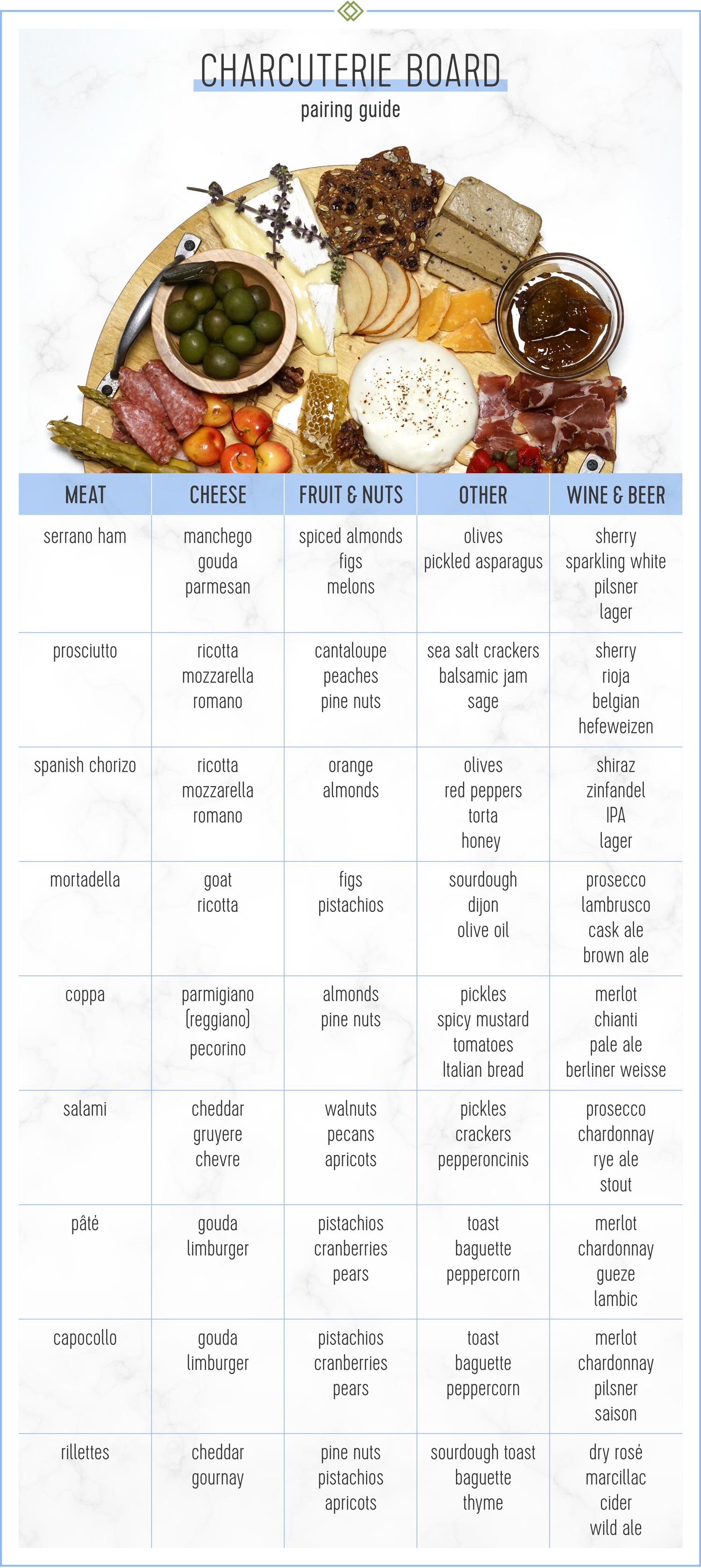How To Build The Perfect Charcuterie Board
Charcuterie (shar-koo-tuh-ree) is a fun word to say, but what is it?
Charcuterie are prepared meats such as bacon, ham, p?t, sausage and salami. Beautifully prepared charcuterie boards are popular at parties because they give the guest a chance to build their own appetizers. These meats are usually paired with cheeses, olives, breads and jams. If you are wondering how to build the perfect charcuterie board, weve got a step-by-step guide. Check it out below!
Charcuterie board essentials
With so much variety in meats and cheeses, its difficult to tell what will work best for you and your guests. Weve narrowed down the basics.
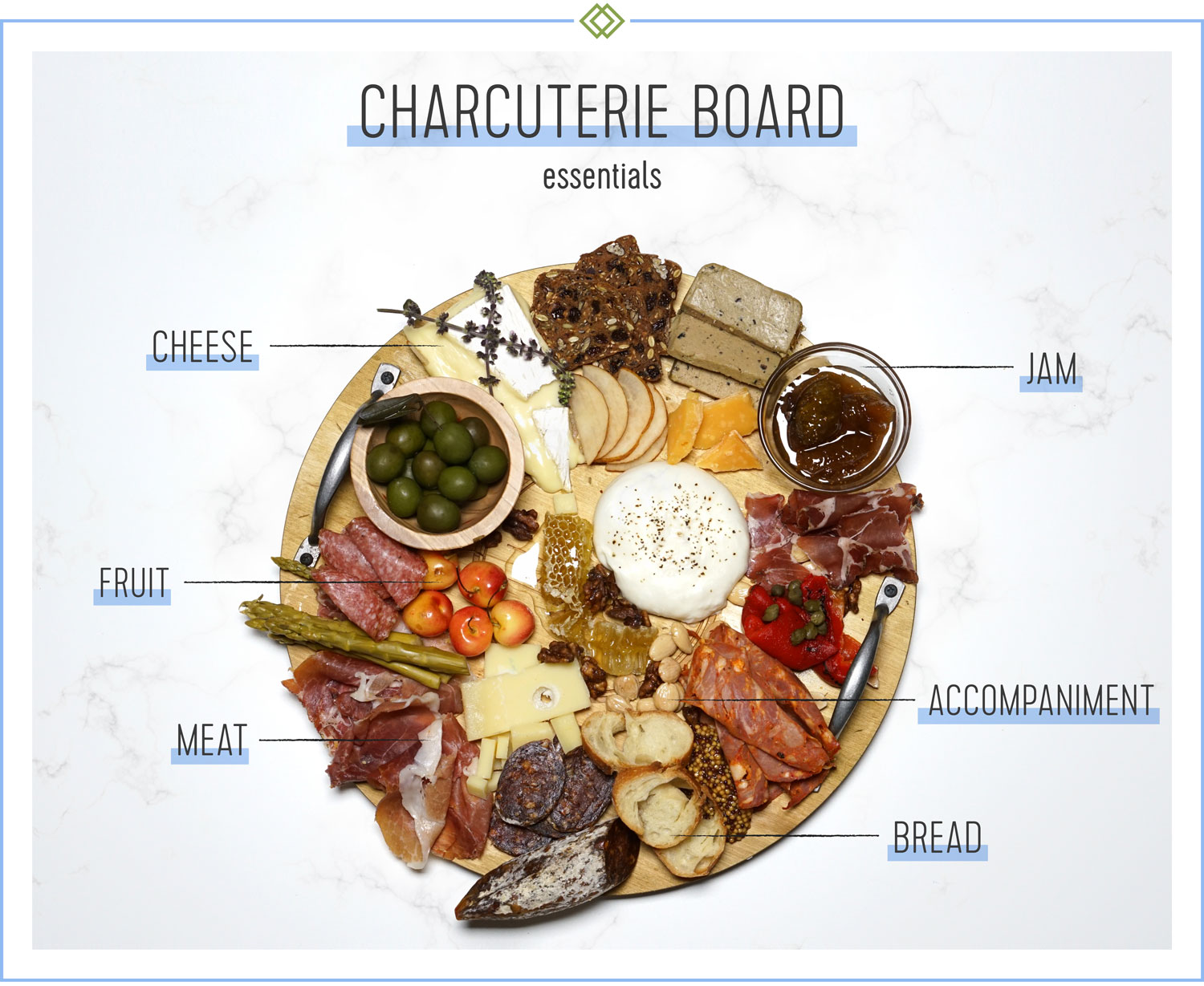
Charcuterie:??The meats will be the bulk of your board. Make sure you select a variety and cut or slice them in order to make it easier for your guests.
Cheese:?These can range between hard, semi-hard, soft, semi-soft and fresh.
Spreads: One or two spreads such as jam or mustard will give any meat and cheese combo the sweet/savory flavor it needs.
Breads/crackers: Hard breads and bigger crackers help keep ingredients together. Make sure to have gluten-free options as well.
Seasonal fruits: Dried and fresh fruits give an added flavor to any pairing and can also serve as a palette cleanser.
Accompaniments: Creativity goes a long way. Adding extra ingredients such as pickled vegetables, nuts or even dark chocolate is a must. Make sure to be aware of any nut allergies before serving!
Types of meats to use in your charcuterie board
Below are the most popular meats used in a traditional charcuterie board. You can find most of these through going to a specialty store. For that reason, weve also listed common, pre-sliced deli meats you can find in just about any grocery store.
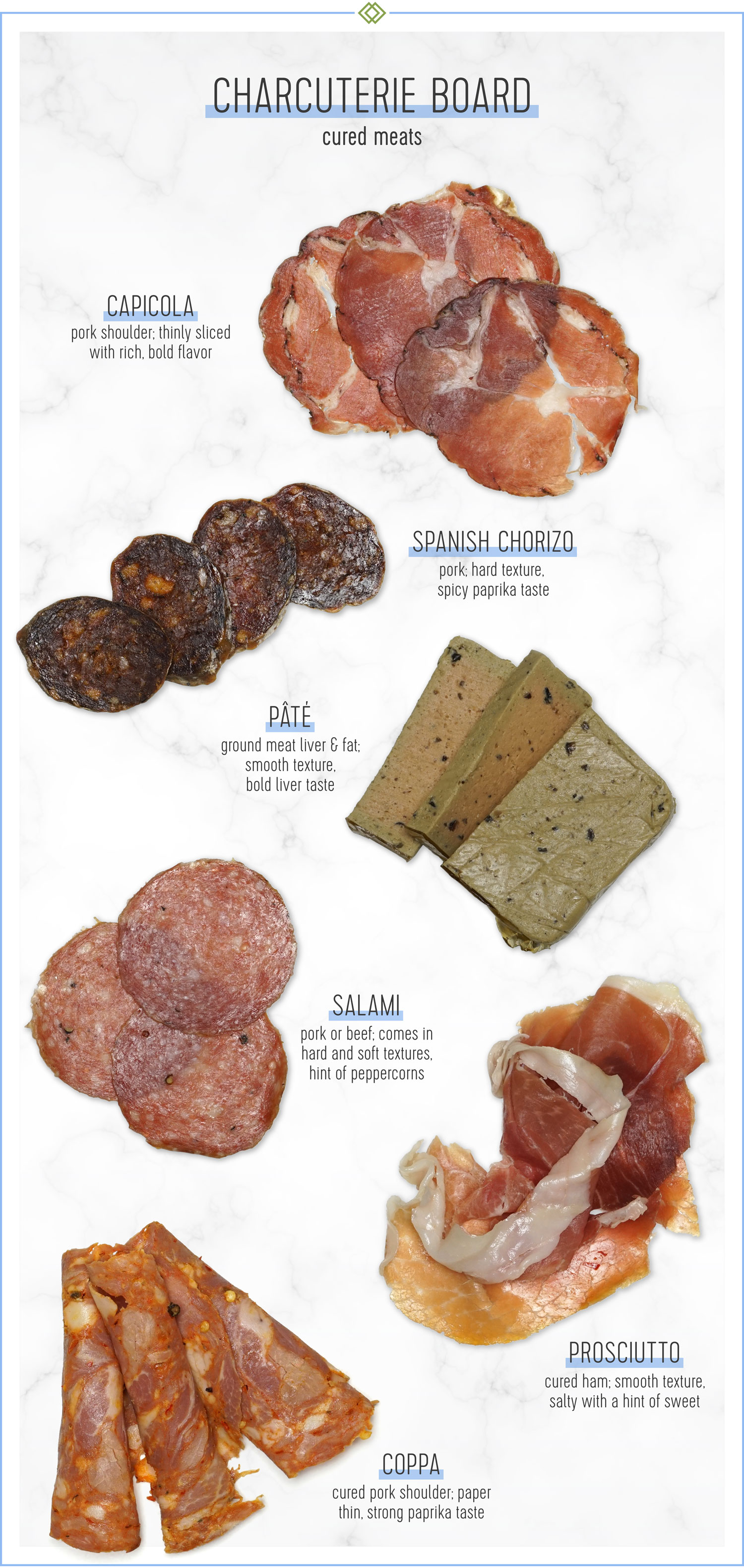
Prosciutto: There are two main types of prosciutto: one type from Italy and the other from Spain. Spanish prosciutto is also known as Jamon Serrano or mountain ham. The main difference is that Italian prosciutto is more aromatic and sliced more thinly. Jamon Serrano has a bolder, saltier taste and is usually sliced thicker. Pairing it with juicier sides like figs, sliced cantaloupe or tomatoes can make a heavenly match.
Salami: Salami has a salty, slightly sweet flavor. It is often made with peppercorns and sometimes garlic and wine, which gives the meat a robust and aromatic quality. Its easy to enjoy it by itself, but it pairs well with stronger flavors like olives, and cheeses. The root of the word salami means salted meat.
Pancetta: Pancetta from the Italian word meaning small belly is a type of thick prosciutto thats rolled up and cured with pepper. This gives it a very robust, meaty flavor. Its great diced and eaten by itself or cubed. It brings a burst of peppery, chewy flavor.
P?t: If youve ever tried liverwurst, then you have an idea of what p?t tastes like. Its a creamy, meaty spread, that comes in many varieties and usually has an area of jelly or fat thats settled during the curing process, which is highly prized. It usually pairs well with things like fresh baguette, toast or slightly acidic foods like olives or even capers.
Spanish chorizo: Spanish chorizo is a unique toasty and rich flavor that comes from mixing pork meat with paprika, giving the meat its distinctive deep rusty color and strong assertive flavor. It goes especially well with hard breads or firm cheeses like manchego, romano, asiago or provolone. It also pairs well with crudit (pickled vegetables) or kalamata olives.
Mortadella: Mortadella has a delicate sweet and aromatic flavor. It often contains pistachio nuts and peppercorns. Unlike most cured meats, mortadella pairs well with delicate flavors as stronger pairings can overwhelm it. A classic Italian combination is mortadella and fresh mozzarella, but mortadella can also be diced up into large cubes that can pair with interesting unusual choices like cheddar, Monterey Jack, tomatoes or even mango!
Coppa: Coppa, also known as capocollo (head of neck), is made from the muscle than runs from the neck to the shoulders and ribs of the pig. The sausage is usually highly marbled and can be either smoked and rubbed with paprika, giving it a charred, peppery flavor. Or it can be air dried. The beef version of coppa is known as bresaola. Both are paired well with firm cheeses, like manchego, provolone and even harder cheese like parmigiano or romano.
Speck: This wonderful dried pork meat is the prosciutto of northern Italy. The name comes from old German and English, meaning bacon or lard and is prepared by both salting and smoking, as well as rubbing with salt, garlic and herbs. Because of the strong smokey and salty flavor, it pairs well with pickles, gherkins, coleslaw and bolder cheeses.
Types of cheeses to use in your charcuterie board
Cheeses also play a huge part in your charcuterie board. They can be layered with your meats or served as a spread on a baguette or cracker. There are several different types of cheeses: Hard, semi-hard, soft, semi-soft, fresh and blue. Here you will find full guide on types of cheeses and accompaniments.
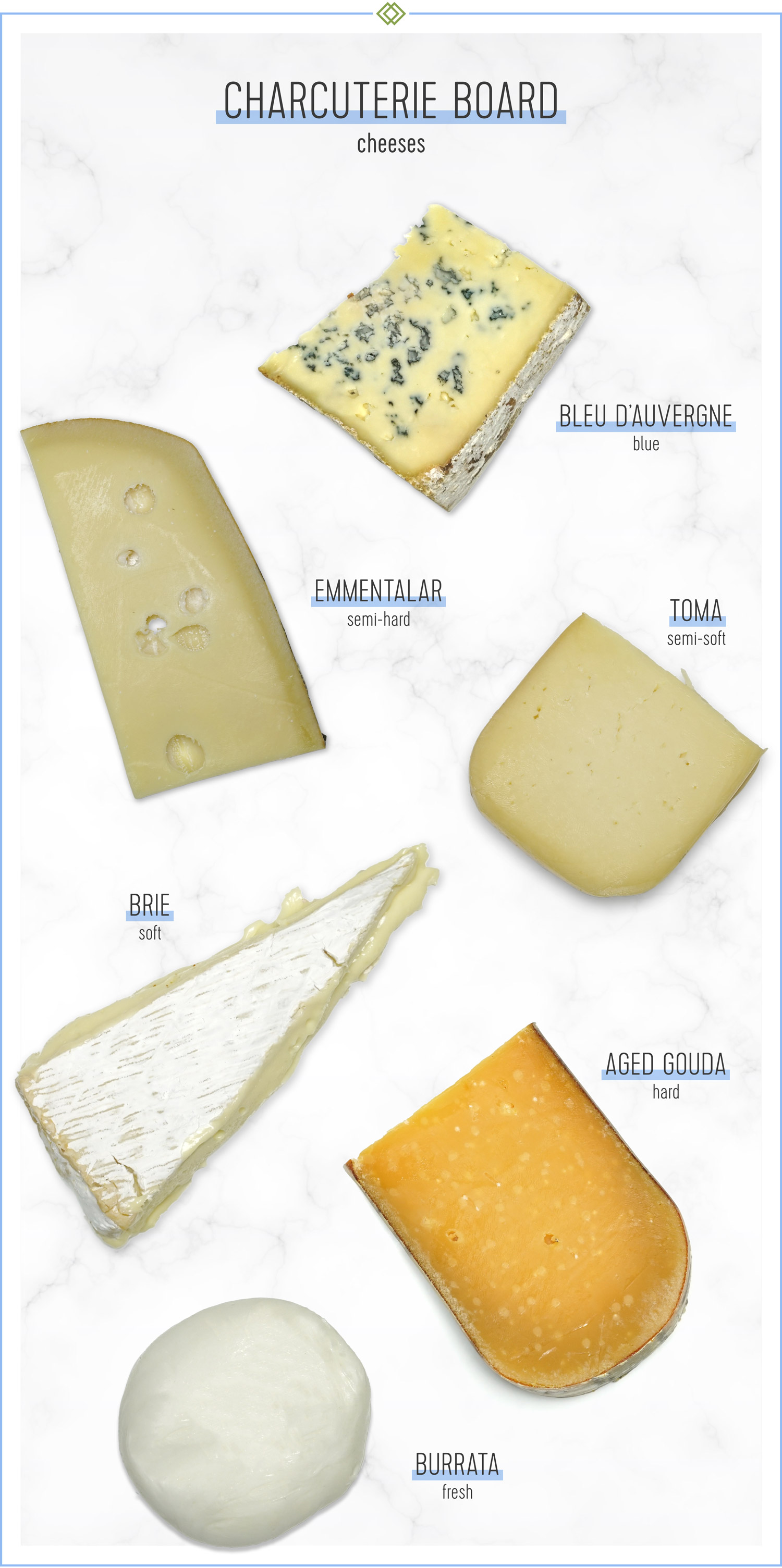
Hard: swiss, gruyere, romano, toscano, emmental, parmigiano-reggiano, pecorino-romano
Semi-hard: colby, gouda, provolone, edam, venus, cheddar, rosso
Soft: brie, feta, cirrus, picolo, acapella, filetta
Semi-soft: havarti, jarlsberg, colby jack, pepper jack,
Fresh: ricotta, cottage, mozzarella, queso fresco, cream cheese, mascarpone, burrata
Using local deli meats and cheeses:
Just because there are fancy names like charcuterie and salumi, it doesnt mean you cant make your own variety at home! Many improvise with whatever they have in the refrigerator, and part of the fun is finding new pairings. You can also add a variety of chutneys for amazing flavors.
American meats:?hams, turkey, bologna, liverwurst, ham steak (cooked and diced), SPAM
American cheeses:?cheddar, provolone, monterey Jack, mozzarella
Portion sizes for your charcuterie board
A charcuterie board is typically meant as an appetizer right before a delicious meal and is usually paired with wine as guests mingle. Its important to know how much to buy, since meats and cheeses can get a little pricey. Usually three ounces of meat and cheese and three pieces of bread or crackers is enough. But, if this is going to be the main course, five ounces of each per person will work best.
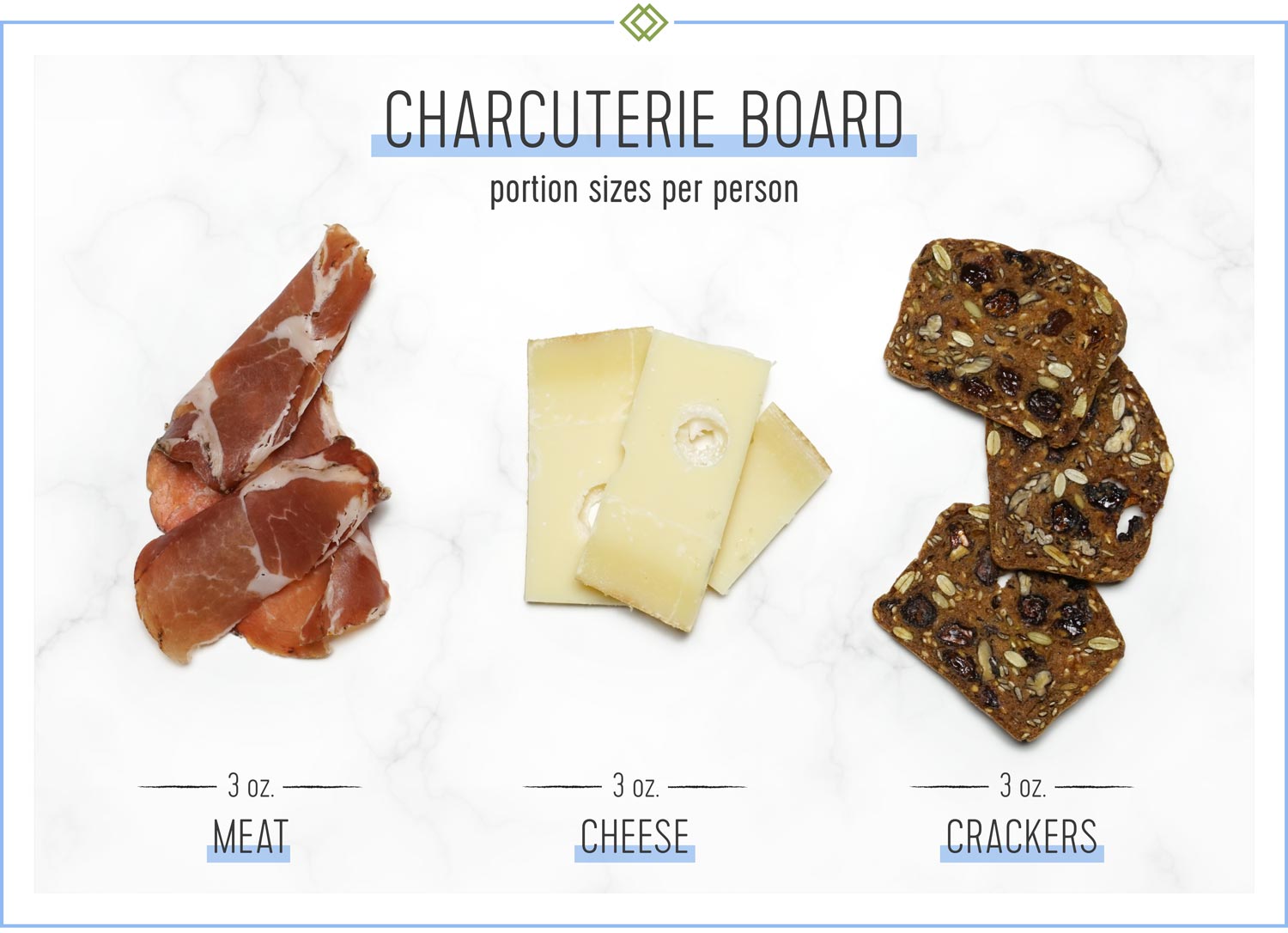
Accompaniments
Accompaniments to your charcuterie are almost as important as the meats you choose. These are what will help balance flavors and bind your layers together. Usually pickled items go well with spicier meats, whereas sweeter accompaniments such as honey go well with fattier meats. Jams and stone-ground mustards work perfectly with meats and cheeses as well.
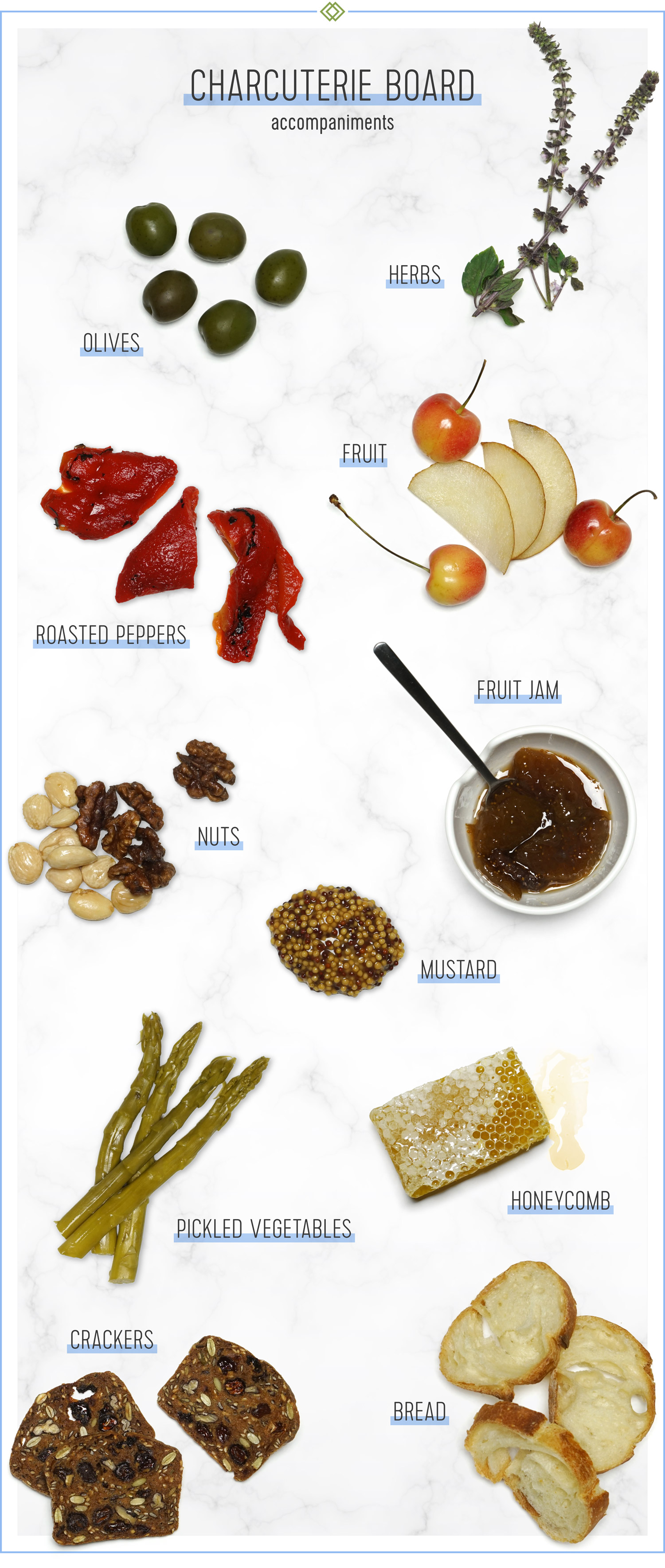 Serving your guests
Serving your guests
If you are setting the board for a party, its best to slice all the meats and cheeses since guests will be placing them on a cracker or bread. For softer cheeses, make sure to provide cheese knives and dont forget spoons for any mustards or jams. The key to a successful charcuterie board is variety.
Charcuterie board for two
If you are looking for food?ideas for a quiet night in, a charcuterie board can also be perfect for two (or one depending on your appetite)! A smaller board?filled with your favorite meats and cheeses is the perfect easy meal to prepare.
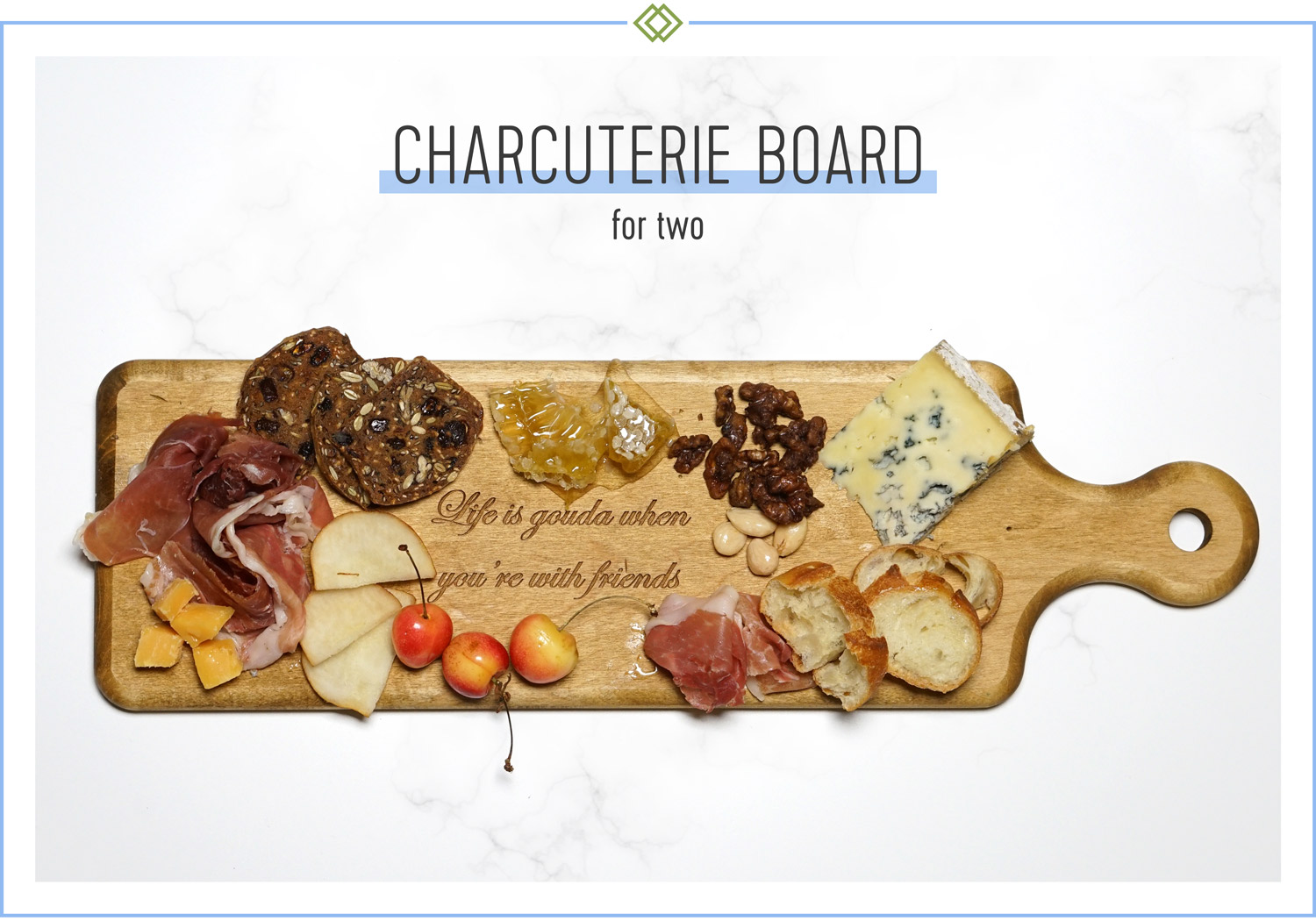
As you can see, building a charcuterie board isnt difficult. Its a matter of combining the right elements together and voilits an instant hit. If you want to make your board extra special, personalize it with your favorite saying!
Charcuterie board pairing guide
Check out our pairing guide below! It includes meat and cheese pairings as well as beer, wine, nut and bread ideas. Use this handy guide every time you are ready to plan your next soire.
